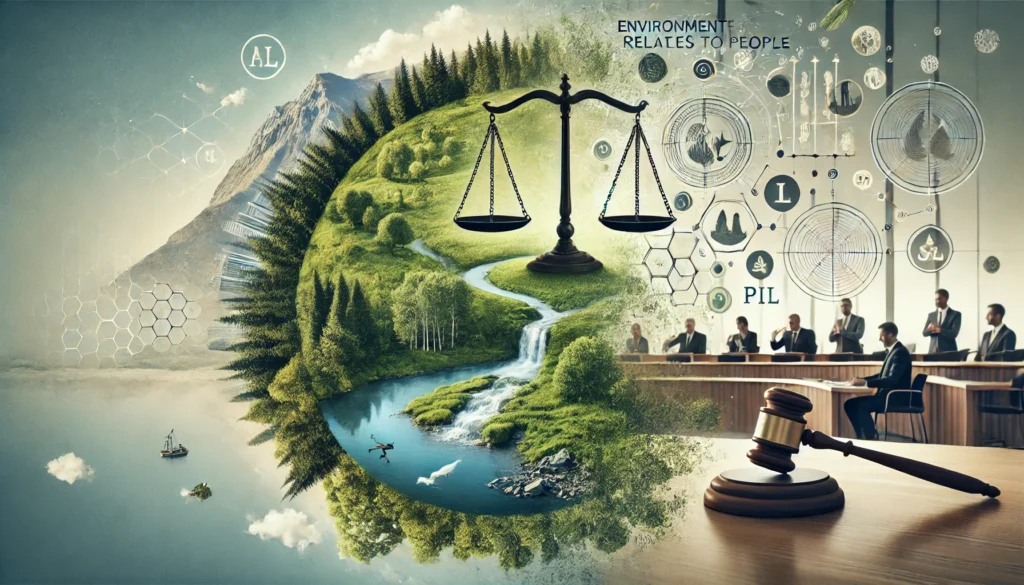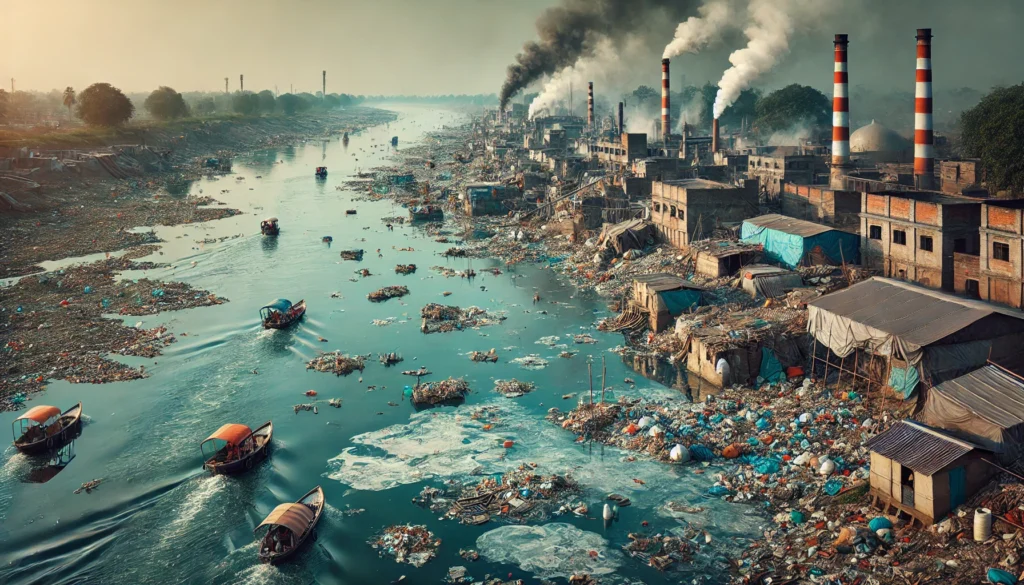Published On: 21st October, 2024
Authored By: Maryam Mustafa Abd el-Majeed al-Bery
Faculty of Law, Alexandria University
Every day we face recent changes. Our life has become more challenging. Suppose we looked a little closer to our lives. We would see that across time; humans are developing, and we cannot deny how also the earth is changing. As Arthur Schopenhauer once said ‘Change alone is eternal, perpetual, immortal. Which made me think, why is change a certain fact in our lives?
As for before, I used to consider changing is not as good as it sounds. And at some point, I was afraid of it. Until I realized that without it, what life do we have? Yes, it might be scary. Unknown with uncertain consequences, yet those qualities are what makes Change unique and even essential at some point.
And here we are not only looking into our lives, but around us, the earth itself is different than what it was. Proving the true nature of time and its relationship to our lives. Change is inescapable and never-ending. It reminds us that the world as well is in a constant state. Reminding us that everything we know, and experience will eventually evolve into something different.
And as time passes, we can see that the earth has changed. Even if that is a good result. Yet more challenges appeared, such as population, and pollution resulting in climate change.
Long-term variations in the typical weather patterns that have come to characterize local, regional, and global climates on Earth are referred to as climate change.
Those Changes seen in Earth’s climate since the mid-20th century are driven by human activities, particularly fossil fuel burning, which increases heat-trapping greenhouse gas levels in Earth’s atmosphere, raising Earth’s average surface temperature. Climate change can also be caused by natural processes that have been overtaken by human activity. These include external forcings like volcanic activity, changes in the Sun’s energy output, and variations in Earth’s orbit, as well as internal variability like cyclical ocean patterns like El Niño, La Niña, and the Pacific Decadal Oscillation.
And since climate change over the years has been a more important topic. An urgent matter to find a solution to. Many studies have been conducted and many other approaches have been taken. Yet, how can the legal approach be beneficial? And if it is, how can we use legislation to help reduce the consequences of climate change? In other words, what is climate change legislation?
What is Climate Change Legislation?
Climate change matter is an important Environmental problem that is in fact causing a huge concern among the countries. Which has led many countries to step up finding a solution in every way possible. Thus, how can we use legislation to help this international problem?
The laws and regulations that establish the legal foundation for climate change action are collectively referred to as climate change legislation. The term is used broadly and includes acts, decrees, and policies that are passed or issued by the legislative and executive branches of government.
These laws and regulations cover activities that are included in disaster risk management, adaptation, and mitigation of climate change. Agriculture, land use, transportation, energy, waste, the environment, tourism, industry, buildings, water, and health are only a few examples of the areas to which laws and regulations may apply or may concentrate on a single area.
Countries first expressly recognized that climate change needed to be tackled with institutions, rules, and procedures at the Rio Earth Summit in 1992. The United Nations Framework Convention on Climate Change (UNFCCC) was established, with the main goal of promoting international action to stabilize greenhouse gas emissions.
-Climate Change Legislation proposals.
-Paris Agreement.
The UNFCCC parties have led to several milestones, most notably the 2015 Paris Agreement. The agreement made by each UNFCCC party to achieve its goal of limiting global warming to well below 2°C, preferably 1.5°C, above pre-industrial levels. In the past years, the world has been taking many recognized steps that helped reduce global warming limiting its effects.
The Paris Agreement is a legally binding international treaty on climate change. It was conducted by 196 Parties at the UN Climate Change Conference (COP21) in Paris, France, on 12 December 2015. Entered into force on 4 November 2016.[1]
The Paris Agreement is a distinguished step in the multilateral climate change process, for the first time, a binding agreement brings all nations together to combat climate change and adapt to its effects. The agreement requires economic and social transformation, based on the best available science. Using this agreement countries established an enhanced transparency framework, under such framework starting in 2024, countries will report transparently on actions taken and progress in climate change reduction, adaptation measures, and support that was provided or received. It also provides for international procedures for the review of the submitted reports.
Such an agreement is quite unique, we can see that many countries are focusing their efforts on helping mitigate climate change. Providing effective science programs, a special budget only dedicated to reducing global warming alongside providing the economic countries with financial support that they might need to achieve the main goal. Which proves the seriousness and the significant efforts that have been taken. Although climate change action needs to be massively increased to achieve the goals of the Paris Agreement, the years since its entry into force have already set low-carbon solutions and new markets. Increased countries, regions, and companies are showing carbon neutrality targets. Zero-carbon solutions are becoming competitive across economic sectors, standing for 25% of emissions.
This direction is most noticeable in the power and transport sectors and has created many new business opportunities for early movers. And by 2030, zero-carbon solutions could be competitive in sectors representing over 70% of global emissions.
-National Climate Change Adaptation Strategy (2020), South Africa.
The Paris Agreement was not the only step that was taken to solve the climate change problem.
This adaptation strategy is conducted in South Africa, this national legislation shows how countries should pay attention to solving the global Warming problems and reducing its effects. This adaptation includes,
– Create formal climate change legislation for adaptation which involves developing climate change legislation and taking it through the parliamentary process for enactment.[2]
-Facilitate the meeting of the Interministerial Committee on Climate Change. This will involve ensuring that the Inter-Ministerial Committee on Climate Change is set up and meets regularly. The Inter-Ministerial Committee on Climate Change will aim to coordinate climate change efforts across sector departments and spheres of government.[3]
– Continue to ease the Intergovernmental Committee on Climate Change (IGCCC) meeting. This will involve ensuring that the IGCCC continues to meet regularly. The IGCCC fosters information exchange, consultation, agreement, and support among the spheres of government about climate change and the government’s response to it. [4]
-National Communication (NC). NC 8. Biennial Reports (BR). BR 5., Biennial Report, National Communication from Australia in 2022
Provides Victoria with the legislative foundation to manage climate change risks, maximize the opportunities that arise from decarbonization, and drive the transition to a climate-resilient community and economy with net zero emissions by 2050.[5]
This direction that is taken by Australia is in fact a great achievement. Not only includes climate legislation and environmental law but it also takes into consideration each aspect of this matter. Including Finance, Industry and industrial processes, Agriculture, and Waste.
This is a fascinating effort, especially in combining legislation with other methods available to help face each environmental crisis. Which is a wonderful use of the law in this matter.
-Goals And Targets.
Many countries right now are going for a greener, cleaner environment. They have set a certain goal to reach which will positively help with climate change. Such as reducing greenhouse gas emissions, adapting to climate impact, and promoting renewable energy. For example, here we have Iceland. Iceland took a distinguished step in promoting renewable energy in fact they have included multiple Acts and measures expecting the promotion of renewable energy. From those measures,
“Energy Exchange in transportation” (Icel.: “Orkuskipti í samgöngum”) policy document, and EcoEnergy (Icel.: Græna orkan), public/private policy group. Both are financial types of measure.[6]
Along with the government’s deliberate plan and specific actions, Iceland will fulfill the 2020 mandatory national targets outlined in Directive 2009/28/EC, which include the overall target and the 10% target for the proportion of energy from renewable sources in transportation. The Commission’s adopted national renewable energy action plan template serves as the foundation for the NREAP.[7]
As for Sweden, In the International Maritime Organization (IMO), Sweden has been one of the countries driving efforts to develop several technical and operational measures aimed at reducing greenhouse gas emissions. An Energy Efficiency Design Index –a standardized way to describe ships’ energy efficiency – was made mandatory in 2013 for most (some 85 %) newly built vessels.
The EEDI attained by any ship can be compared with a reference level based on an average for existing vessels. Ships whose contracts are placed after 2013 must be at least as energy efficient as this level. A mandatory Ship Energy Efficiency Management Plan (SEEMP) has also been introduced.
This is to be used in ships’ management systems to improve energy efficiency in both existing and new ships. In addition, a voluntary Energy Efficiency Operational Indicator (EEOI) has been introduced as a tool and benchmark. This can be used by existing ships.[8]
In addition to Sweden, France adopted an ecological plan to;
-Reduce greenhouse gas emissions and limit the effects of climate change;
-Adapt to the inevitable consequences of climate change;
-Restore biodiversity;
-Reduce the exploitation of natural resources to a sustainable rate;
-Reduce all pollution that affects health.[9]
The United States recently passed the Inflation Reduction Act of 2022, which allocates about $370 billion (about $1,100 per person in the US) (about $1,100 per person in the US) in clean energy and climate investments over the next decade.
This landmark legislation aims to reduce carbon emissions by approximately 40% by 2030. It is a significant step toward addressing the urgent climate crisis and encouraging other nations to take similar actions.
Congress enacted the most important clean energy and climate legislation in the country’s history after realizing how critical it is to confront the climate issue.
It will put the US on a path to innovate modern technologies, leverage the carbon-storing powers of nature, incentivize cleaner energy, and build community resilience.[10]
Those wonderful efforts were followed by many others, and it is surprising to see that each country has a unique style of adapting acts, methods, and measures that are suitable to them.
-Impacts And Analysis.
Those significant efforts and huge steps had created a profound impact on various aspects of our lives, for example;
–Environmental impact:
Climate change legislation has an impact on the effects of greenhouse gas, and air and water quality, such as:
Greenhouse Gases:
Hydrofluorocarbons (HFCs): These potent greenhouse gases are commonly used in applications like air conditioning, refrigeration, and aerosols. The American Innovation and Manufacturing (AIM) Act of 2020 directs the U.S. to phase down HFC production and consumption by 85% over the next 15 years, contributing to global warming mitigation.
Also, Vehicle Emissions Standards: EPA finalized strong greenhouse gas emissions standards for passenger cars and light trucks (Model Years 2023-2026). These standards reduce climate pollution and improve public health. Which in the current days is essential.
Air Quality:
-Increased Pollen: Rising temperatures and higher carbon dioxide concentrations extend the pollen season and increase pollen production by plants.
-Ground-Level Ozone: Hot, sunny days can elevate ground-level ozone, impacting air quality.
-Particulate Matter: Drought-induced dust can worsen particulate matter levels and air quality.
-Indoor Pollutants: Extreme weather events (like flooding) can lead to indoor pollutants (e.g., mold, bacteria) due to water damage.
-Wildfires: Wildfire smoke significantly lowers air quality and harms human health.
Water Quality:
-Sea Level Rise: Rising sea levels displace coastal businesses and residences, affecting water quality and ecosystems.
Reduced Emissions:
-In countries with strong rule of law, new laws focusing on mitigation have been shown to reduce annual CO₂ emissions by an average of 0.8% in the first three years and 1.8% in the longer term.
-Economic Impacts:
1-Biophysical Damages and Climate Change.
2-Economic Transformation:
Climate legislation can lead to permanent shifts in production and employment. A huge change in the weather can lead to huge changes that usually affect productivity.
Industries tied to carbon-based energy may decline, while alternative energy sources and less-energy-intensive goods/services grow
-Clean energy jobs are rising, and companies are investing in sustainable practices.
-Costs and Investment Uncertainties:
The costs and extent of new investment are uncertain but necessary for a sustainable energy sector.
Legislation like the Inflation Reduction Act (IRA) aims to transform the U.S.
4-Macroeconomic Policies and Adaptation:
Lower-income countries face economic risks from climate change.
Policies must accommodate frequent weather shocks and build resilience.
5-Disruptions and Adaptation:
Climate change disrupts property, infrastructure, human health, and productivity. This is an effect that creates a concern that needs to be addressed
Adaptation in this situation is in fact crucial to minimize economic losses.
-Challenges and Opportunities.
Even though climate change legislation is a revolutionary step in our world. It is only rational that we keep our earth safe. Yet those efforts face different obstacles that might make the process of those legislation quite complicated. Such as:
1-Political Challenges:
-Partisan Divides: Climate change remains a politically divisive issue, hindering bipartisan cooperation on effective legislation.
-Public Perception: Despite scientific consensus, public awareness and urgency vary. Overcoming climate skepticism is crucial. That may make it harder to address the issue and may obstruct any effective step that is taken in accordance with such a matter.
-Interest Group Opposition: Industries with vested interests may resist change, lobbying against stringent regulations.
Media Influence: Media narratives can shape public opinion and impact policy decisions.
2-Practical Obstacles:
-Technological Constraints: Implementing concrete measures requires adequate technology and knowledge. To help spread information and ensure public awareness
-Financial Resources: Funding climate initiatives can be challenging, especially for low-income countries. Which can be solved by cooperation among the countries.
-Long-Term Adaptation: Climate change demands long-term planning and adaptation, which can be difficult. And since global warming is a concern that matters to all countries, adapting to such planning could be complicated especially in developing countries
Climate change is a huge concern, and climate legislation plays a crucial role in addressing greenhouse gases, improving air quality, and safeguarding water resources. And it requires navigating political complexities and practical limitations. Its effects have started to have many impacts on our lives which over the years has gained our attention. And by time we have been using science, technology, and legislation to avoid any further consequences and solve current problems. And trying to find every beneficial way to improve the impacts and create a safe environment that allows us to grow and evolve.
Our world is a wonderful creation, full of wonders, mysteries, and much more. Which makes it understandable that we will always need to move, change, and adapt. Even how complicated it might sound.
Yet this is the beauty of our existence. And it proves how great the human mind is. How it can be used each way to solve and improve every situation. As for our article, who would think that legislation might be a reliable tool against our environmental crisis?
But here we are today, with the effort of most countries even though the continuous obstacles, they are using every method that is beneficial to our environment. At the end of the day, we all want to save our earth.
References
[1] Decision 1/CMA.3, para. 32. Paris agreement
[2] Act.7.1.1, National Climate Change Adaptation Strategy, South Africa
[3] Act 7.2.1 National Climate Change Adaptation Strategy, South Africa
[4] Act 7.2.2 National Climate Change Adaptation Strategy, South Africa
[5] 4.3.7.1 Legislation Act 2017. Australia’s Eighth National Communication report on climate change.
[6] Measures for achieving the targets, 4.1, Tabel 5, Renewable Energy Action Plan
Iceland Executive
[7] Article 4 of Directive 2009/28/EC this National Renewable Energy Action Plan (NREAP).
[8] Sweden National Communication. NC 7, implementation of Articles 3.3 and 3.4 of the Kyoto Protocol
[9] France Nation Verte: Ecological Plan 2022
[10] S.938 — 117th Congress, Climate Emergency Act of
(2021-2022)




